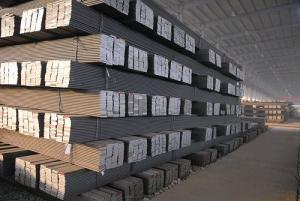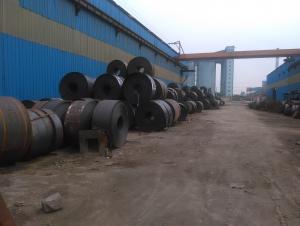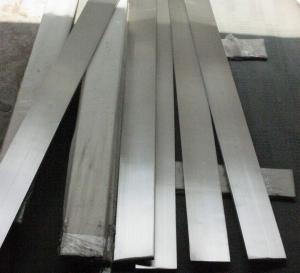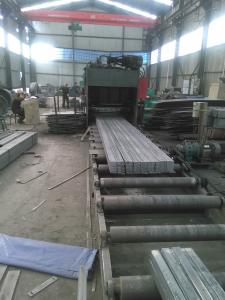JIS G3101 steel flat for construction with good
- Loading Port:
- Tianjin
- Payment Terms:
- TT OR LC
- Min Order Qty:
- 25 m.t.
- Supply Capability:
- 10000 m.t./month
OKorder Service Pledge
OKorder Financial Service
You Might Also Like
Product Description:
Specifications of MS Channel:
1.We supply high quality MS Channel at reasonable price, including Chinese standard, Japanese standard and so on.
Standard | GB/JIS |
Material Grade | Q235,SS400 |
Technique: | Hot Rolled |
Sizes as per chinese standard: | 50*37*4.5mm - 300*89*11.5mm |
Sizes as per japanese standard: | 50*25*3mm – 200*80*7.5mm |
Length: | 6meter, 9meter, 12meter |
Note: 1.we are also competent to provide our customers other MS Channel based on other sizes according to customer’s requirements.
2. The length of our ms channel could be cut into other meters as per customer’s requirements. For example, the channel in 6meters could be cut into 5.8meters in order to be fit in the 20ft container.
2. The detailed sections of MS Channel as per GB standard.are shown in the table-1:
GB U CHANNEL | Standard | Sectional | Dimension |
| Mass: |
(mm) | (mm) | (mm) | (mm) | ||
50X37 | 50 | 37 | 4.50 | 7.0 | 5.438 |
63X40 | 63 | 40 | 4.80 | 7.5 | 6.634 |
80x43 | 80 | 43 | 5.00 | 8.0 | 8.045 |
100x48 | 100 | 48 | 5.30 | 8.5 | 10.007 |
120x53 | 120 | 53 | 5.50 | 9.0 | 12.059 |
140x58 | 140 | 58 | 6.00 | 9.5 | 14.535 |
140x60 | 140 | 60 | 8.00 | 9.5 | 16.733 |
160x63 | 160 | 63 | 6.50 | 10.0 | 17.240 |
160x65 | 160 | 65 | 8.50 | 10.0 | 19.752 |
180x68 | 180 | 68 | 7.00 | 10.5 | 20.174 |
180x70 | 180 | 70 | 9.00 | 10.5 | 23.000 |
200x73 | 200 | 73 | 7.00 | 11.0 | 22.637 |
200x75 | 200 | 75 | 9.00 | 11.0 | 25.777 |
220x77 | 220 | 77 | 7.00 | 11.5 | 24.999 |
220x79 | 220 | 79 | 9.00 | 11.5 | 28.453 |
250x78 | 250 | 78 | 7.00 | 12.0 | 27.410 |
250x80 | 250 | 80 | 9.00 | 12.0 | 31.335 |
250x82 | 250 | 82 | 11.00 | 12.0 | 35.260 |
280x82 | 280 | 82 | 7.50 | 12.5 | 31.427 |
280x84 | 280 | 84 | 9.50 | 12.5 | 35.823 |
280x86 | 280 | 86 | 11.50 | 12.5 | 40.219 |
300x85 | 300 | 85 | 7.50 | 13.5 | 34.463 |
300x87 | 300 | 87 | 9.50 | 13.5 | 39.173 |
300x89 | 300 | 89 | 11.50 | 13.5 | 43.883 |
Table-1
3. The chemical composition of HR Channel Steel according to Q235B is shown in Table-2.
Alloy No | Grade | Element(%) | ||||
C | Mn | S | P | Si | ||
Q235 | B | 0.12-0.20 | 0.3-0.7 | ≦0.045 | ≦0.045 | ≦0.3 |
Table-2
Note: we are able to present our customers relevant SGS test report for chemical composition of HR Channel Steel.
4. The mechanical property of HR Channel Steel according to Q235B is shown in Table-3-1 and Table-3-2
Alloy No | Grade | Yielding Strength Point(Mpa) | |||
Thickness(mm) | |||||
≦16 | >16-40 | >40-60 | >60-100 | ||
≧ | |||||
Q235 | B | 235 | 225 | 215 | 205 |
Table-3-1
Alloy No | Grade | Tensile Strength(Mpa) | Elongation After Fracture(%) | |||
Thickness(mm) | ||||||
≦16 | >16-40 | >40-60 | >60-100 | |||
≧ | ||||||
G235 | B | 375-500 | 26 | 25 | 24 | 23 |
Table-3-2
Note: we are able to present our customers relevant SGS test report for mechanical property of MS Channel as customer’s request.
Applications of MS Channel:
The MS Channel can be applied to construction of warehouses, workshops, sport stadiums and car parks etc.The hot rolled channel steel belongs to carbon structural steel which is applied to in the field of construction and machinery.In details, the hot rolled channel steel is usually used for arch-itechtural structure, and they could be welded in order to support or hang a vari-ety of facilities. They are also usually used in combination with I beam. Generally,the hot rolled channel steel we supply must possess perfect welding property, riveting property and mechanical property and so on.
Package & Delivery of MS Channel:
1.The hot rolled channel steel will be packed in bundle with steel wire at each end of every bundle and color marking in order to help the customer to recognize his goods more easily at sight.
2. And the hot rolled channel steel could be loaded into 20ft or 40ft container, or by bulk cargo.If the weight of each bundle reaches more than 3.5 mt, the loading by break bulk cargo should be choosed.When the weight of each bundle reaches less than 3mt, the loading by container should be choosed.
3.As for the transportaion from mill to loading port, the truck will be usually used. And the maximum quantity for each truck is 40mt.
4.All in all, we could do in accordance with customer's request
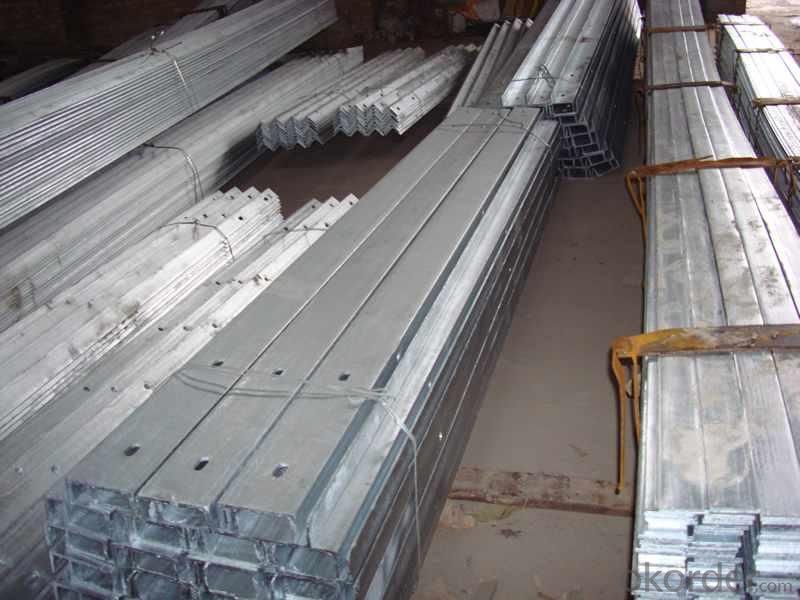
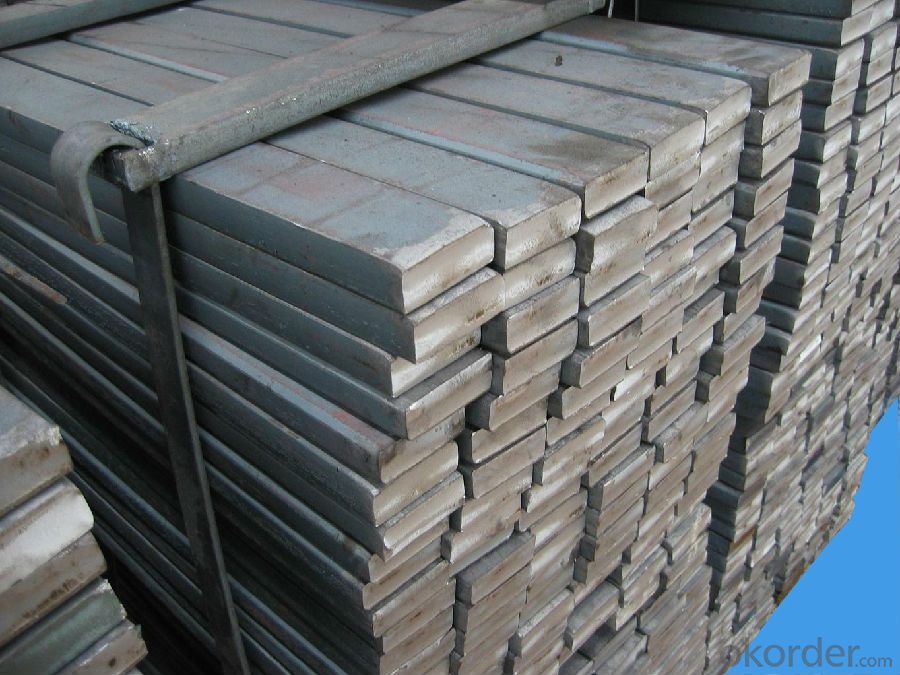

- Q:Are steel flat bars suitable for machine frames?
- Indeed, machine frames can generally be constructed using steel flat bars. Steel is renowned for its robustness, longevity, and ability to withstand wear and tear, which renders it a prevalent selection for machine frames across diverse industries. The flat and rectangular shape of steel flat bars proves especially advantageous for the construction of machine frames as it facilitates effortless welding and assembly. Moreover, steel flat bars provide exceptional stability and rigidity, ensuring that the machine frame can effectively bear the weight and vibrations produced during machine operation. In summary, steel flat bars furnish a dependable and solid base for machine frames, making them a fitting choice for this purpose.
- Q:Can steel flat bars be used for making brackets or supports for medical equipment?
- Steel flat bars are indeed suitable for creating brackets or supports for medical equipment. The reason is that steel is a robust and long-lasting material capable of offering the required stability and support necessary for medical equipment. Moreover, it possesses exceptional load-bearing capabilities and can endure substantial pressure or weight. Additionally, steel exhibits resistance to corrosion, a vital trait for medical equipment that may encounter moisture or other potentially harmful substances. In summary, due to their strength, durability, and corrosion resistance, steel flat bars are an appropriate option for fabricating brackets or supports for medical equipment.
- Q:Are steel flat bars suitable for welding or soldering?
- Yes, steel flat bars are suitable for welding or soldering. Steel is a versatile and commonly used material in various industries, including construction, manufacturing, and automotive. Steel flat bars are often used for structural purposes and can be easily welded or soldered together to create larger structures, such as frames or supports. Both welding and soldering methods can effectively join steel flat bars, depending on the specific application and desired strength of the connection. Welding involves melting and fusing the steel together, creating a strong and permanent bond. Soldering, on the other hand, uses a lower temperature to melt a filler material (solder) that flows into the joint, creating a solid connection. However, it is important to note that the specific type of steel used in the flat bars, such as carbon steel or stainless steel, may require different welding or soldering techniques and materials. It is always recommended to consult with a professional or refer to the manufacturer's guidelines for specific instructions on welding or soldering steel flat bars.
- Q:What are the different types of surface treatments for steel flat bars?
- Steel flat bars can be treated with various surface treatments, each serving a specific purpose and providing unique benefits. Some commonly used surface treatments for steel flat bars are as follows: 1. Hot-dip galvanizing: Immersing the steel flat bar in molten zinc forms a protective layer on its surface. This treatment offers excellent corrosion resistance and durability, making it ideal for outdoor applications. 2. Powder coating: A dry powder is applied to the surface of the steel flat bar and then cured with heat. This creates a tough and durable finish that is resistant to chipping, scratching, and fading. Powder coating is available in a wide range of colors and enhances the aesthetic appeal of the steel flat bar. 3. Electroplating: A thin layer of metal, such as chrome, nickel, or zinc, is deposited onto the surface of the steel flat bar through an electrochemical reaction. This treatment improves corrosion resistance, enhances appearance, and provides specific functional properties based on the chosen metal. 4. Paint coating: Applying a paint coating to the surface of the steel flat bar offers both protection and aesthetics. Paint coatings can be customized to meet specific requirements and are available in various types such as epoxy, polyurethane, and acrylic. They provide good corrosion resistance and can be reapplied when needed. 5. Anodizing: Although primarily used for aluminum, anodizing can also be applied to steel. This process involves creating an oxide layer on the surface of the steel flat bar through an electrolytic process. Anodizing enhances corrosion resistance and can be combined with coloring techniques to achieve a decorative finish. 6. Phosphating: Phosphating is a chemical treatment that converts the surface of the steel flat bar into a layer of phosphate crystals. This treatment improves corrosion resistance, provides an excellent base for subsequent coatings or paints, and enhances the adhesion of lubricants. 7. Shot blasting: Shot blasting is a mechanical surface treatment that involves propelling abrasive particles onto the surface of the steel flat bar at high speeds. This process removes impurities, rust, scale, and creates a textured finish, thus improving the adhesion of subsequent coatings. Each of these surface treatments offers distinct advantages and should be selected based on the specific requirements of the intended application, desired appearance, and the level of corrosion resistance needed for the steel flat bar.
- Q:Can steel flat bars be used in the manufacturing of conveyor systems?
- Yes, steel flat bars can be used in the manufacturing of conveyor systems. Steel flat bars are commonly utilized for their strength, durability, and versatility, making them suitable for various industrial applications, including conveyor systems. They can be used for constructing frames, supports, guides, or even as conveyor belts in certain cases. Steel flat bars provide stability and can withstand heavy loads, making them an ideal choice for conveyor system manufacturing.
- Q:Can steel flat bars be galvanized or coated with other materials?
- Steel flat bars can undergo galvanization or be coated with alternative materials. Galvanization involves applying a zinc protective layer to prevent corrosion. This can be accomplished through hot-dip galvanization, where the steel is immersed in molten zinc, or electroplating, which applies a zinc coating using an electrochemical process. In addition to galvanization, alternative materials can be used to coat steel flat bars for various purposes. These coatings offer extra corrosion protection, enhance the steel's appearance, or improve specific properties. Common coating materials for steel flat bars include epoxy, polyurethane, powder coating, and paint. The application methods vary, such as spraying, dipping, or powder coating, depending on specific requirements and desired outcomes. The choice of coating material and method relies on factors like the intended use, the environment of use, and desired appearance or performance characteristics. It is crucial to consult experts or professionals in the field to determine the most suitable coating option for individual needs.
- Q:Can steel flat bars be used for manufacturing aerospace components?
- Yes, steel flat bars can be used for manufacturing aerospace components. Steel is a commonly used material in aerospace manufacturing due to its high strength, durability, and resistance to corrosion. Steel flat bars can be easily machined and formed into various shapes and sizes, making them suitable for producing different aerospace components such as brackets, supports, frames, and structural elements. Additionally, steel flat bars can provide the necessary strength and stability required for aerospace applications, ensuring the safety and reliability of the manufactured components.
- Q:What are the different types of surface coatings available for steel flat bars?
- There are several types of surface coatings available for steel flat bars, each offering unique benefits and characteristics. 1. Galvanized Coating: This is a common type of coating where a layer of zinc is applied to the surface of the steel flat bar. It provides excellent corrosion resistance, protecting the steel from rust and other environmental factors. 2. Powder Coating: In this process, a dry powder is applied to the steel flat bar and then heated to form a durable coating. Powder coating offers a wide range of colors and finishes, making it a popular choice for decorative and protective purposes. 3. Epoxy Coating: Epoxy coatings are known for their excellent adhesion and chemical resistance. They provide a tough and durable layer that can withstand harsh environments, making them suitable for industrial applications. 4. Paint Coating: Paint coatings are a cost-effective option for protecting steel flat bars. They can be applied in various colors and finishes, providing both aesthetic appeal and protection against corrosion. 5. Anodized Coating: Anodizing is commonly used on aluminum, but it can also be applied to steel flat bars. This process involves creating an oxide layer on the surface, which enhances corrosion resistance and improves the appearance of the steel. 6. Chrome Plating: Chrome plating involves depositing a layer of chromium onto the steel flat bar surface. This coating provides excellent hardness, wear resistance, and a polished appearance. 7. Phosphate Coating: Phosphate coatings are often used as a pre-treatment before painting or powder coating. They enhance the adhesion of subsequent coatings and provide additional corrosion resistance. It is important to consider the specific requirements of your application when choosing the appropriate surface coating for steel flat bars. Factors such as corrosion resistance, durability, aesthetics, and cost should be taken into account to ensure the best choice for your needs.
- Q:Can steel flat bars be machined?
- Indeed, it is possible to machine steel flat bars. Machining entails utilizing machine tools to shape, cut, or drill a material. Steel, being a versatile substance, can be readily machined to fulfill specific requirements. To machine steel flat bars, one must employ a range of tools including lathes, mills, drills, and grinders to cut, shape, or generate holes in the metal. Nonetheless, it is crucial to acknowledge that the machinability of steel can differ based on its composition, hardness, and heat treatment. To attain the desired outcomes when machining steel flat bars, it is imperative to select the appropriate tools, cutting speeds, and feeds.
1. Manufacturer Overview |
|
|---|---|
| Location | |
| Year Established | |
| Annual Output Value | |
| Main Markets | |
| Company Certifications | |
2. Manufacturer Certificates |
|
|---|---|
| a) Certification Name | |
| Range | |
| Reference | |
| Validity Period | |
3. Manufacturer Capability |
|
|---|---|
| a)Trade Capacity | |
| Nearest Port | |
| Export Percentage | |
| No.of Employees in Trade Department | |
| Language Spoken: | |
| b)Factory Information | |
| Factory Size: | |
| No. of Production Lines | |
| Contract Manufacturing | |
| Product Price Range | |
Send your message to us
JIS G3101 steel flat for construction with good
- Loading Port:
- Tianjin
- Payment Terms:
- TT OR LC
- Min Order Qty:
- 25 m.t.
- Supply Capability:
- 10000 m.t./month
OKorder Service Pledge
OKorder Financial Service
Similar products
New products
Hot products
Related keywords
